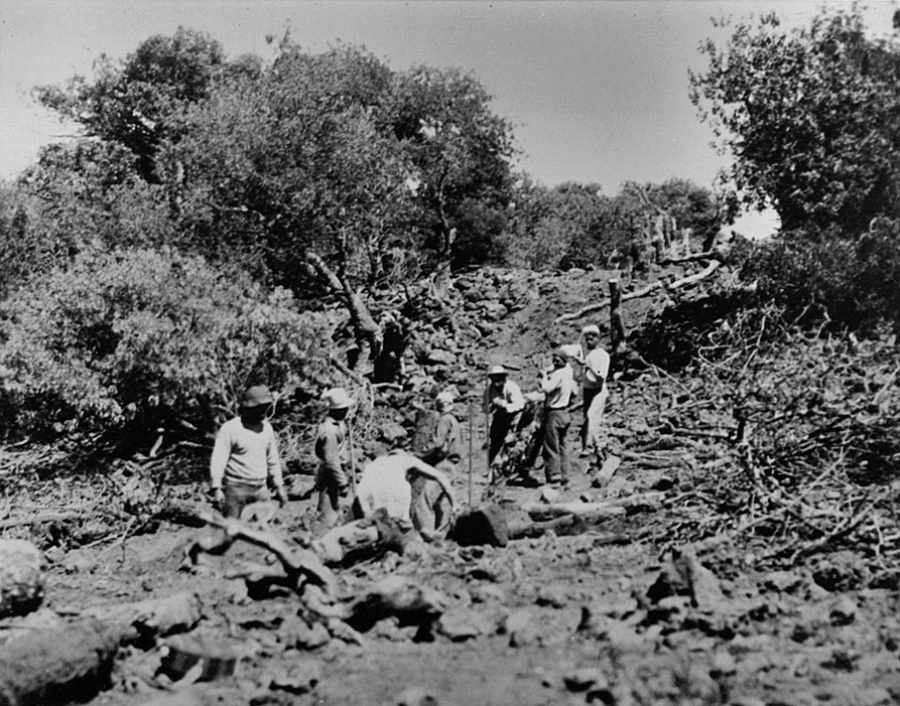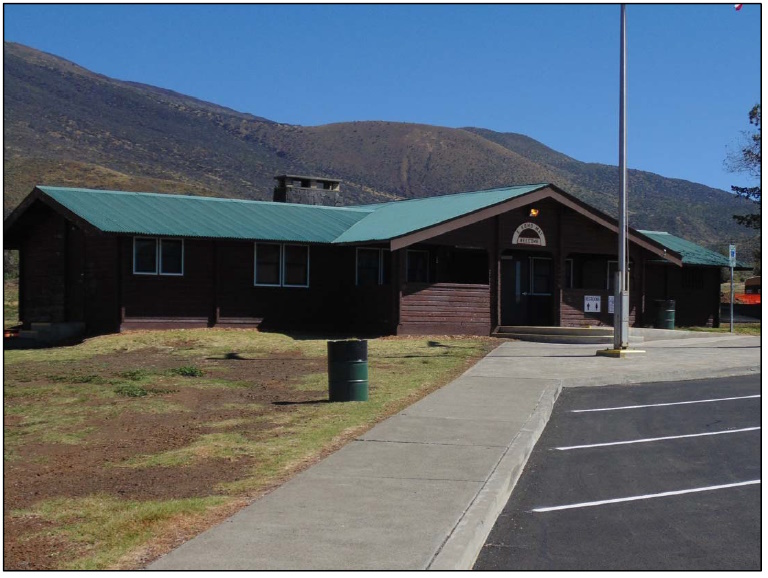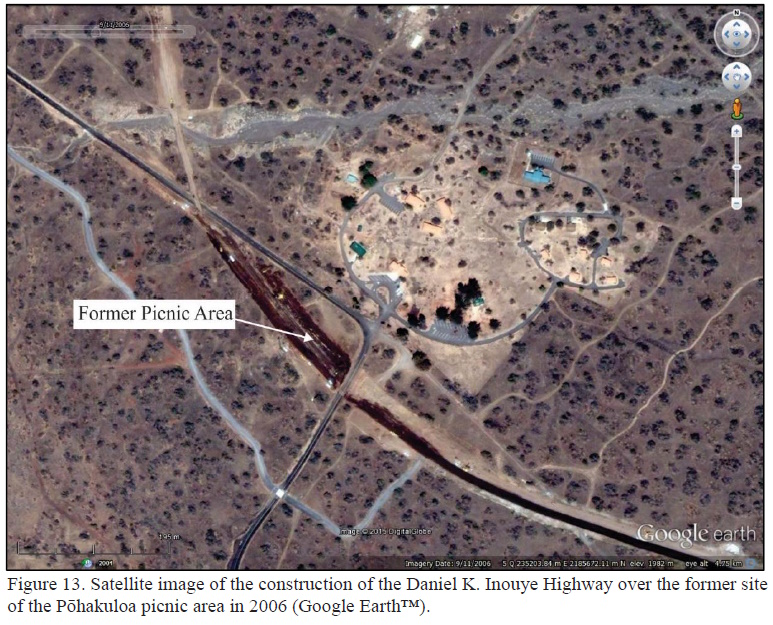“The Makanalua peninsula – often simply referred to as ‘Kalaupapa’ or ‘the Kalaupapa peninsula’ – includes three ahupua‘a. Kalaupapa National Historical Park contains 10,725 acres over 12 square miles, including 2,000 acres of ocean.”
“Owners of the land include the State Department of Land and Natural Resources, the State Department of Hawaiian Home Lands (1,247 acres) and The National Park Service (23 acres at the Kalaupapa Lighthouse …). Some smaller land holdings at the top of the North Shore cliffs that separate the peninsula from topside Molokai are privately owned.” (Ka Ohana O Kalaupapa)
“The park service has a $250,000 a year lease with DHHL which runs through 2041, and another lease with DLNR which expires in 2029.” (OHA)
State law (HRS §326-34) states that the county of Kalawao consists of that portion of the island of Molokai known as Kalaupapa, Kalawao and Waikolu, and commonly known or designated as the Kalaupapa Settlement, and is not a portion of the County of Maui, but is constituted a county by itself.
Access to Kalaupapa is severely limited. There are no roads to the peninsula from “topside” Molokai. Land access is via a steep trail on the pali (sea cliff) that is approximately three miles long with 26 switchbacks.
Kalaupapa National Historical Park became a unit of the National Park System in 1980. The primary story being told at Kalaupapa is the forced isolation from 1866 until 1969 of people from Hawaiʻi afflicted with Hansen’s disease (leprosy) to the remote northern Kalaupapa peninsula on the island of Molokai. (NPS)
The Park differs significantly from most other national parks in that nearly all of the 8,725 acres of land, 2,000 acres of water, and improvements within the authorized boundary may remain in non-Federal ownership to be managed by the National Park Service through cooperative agreements.
The primary responsibilities for the State Department of Health at Kalaupapa are to provide food, housing, health care, and social services for the patient community. Patients have the right to take and utilize fish and wildlife resources without regard to Federal fish and game laws and regulations.
On a national level, Congress established the Park per (PL 96-565 (1980)):
- to preserve and interpret the Kalaupapa settlement for present and future generations;
- to provide a well-maintained community in which the Kalaupapa leprosy patients are guaranteed that they may remain at Kalaupapa as long as they wish and to protect the current lifestyle of these patients and their individual privacy. In addition, Congress called for preservation and maintenance of the present character of the community and its historic sites and structures.
- to provide that the preservation and interpretation of the settlement be managed and performed by patients and Native Hawaiians to the extent practical, and that training opportunities be provided to such persons in management and interpretation of the settlement’s cultural, historical, educational, and scenic resources.
Under Lease No. 231, DHHL leases 1,247-acres of land at Kalaupapa to the National Park Service to and including July 14, 2041, “solely as an integral part of the Kalaupapa National Historical Park established by Public Law 96-565 and for the purposes expressed therein.”
The park has formal twenty-year cooperative agreements with the State of Hawaiʻi, Departments of Health, Transportation, and Land and Natural Resources. The cooperative agreements allow for shared responsibilities.
“The feared and then-untreatable disease arrived in Hawaii with merchant sailors in the 1840s. ‘The disease became epidemic. There arose a fear that perhaps Hawaii would become a bastion of leprosy,’ according to Dr S Kalani Brady, a professor and physician in Hawaii who treats the islands’ remaining Hansen’s disease patients. This fear spurred the authorities to take harsh action.” (NIH)
On January 6, 1866, nine men and three women were sent to what is commonly known as the Kalaupapa peninsula because of a new government policy that called for the isolation of anyone diagnosed with leprosy.
They would be the first of an estimated 8,000 people from Hawaii who would be taken from their families and relocated, first in the original settlement on the windward side of Kalawao and, later, at Kalaupapa on the leeward side. (Ka Ohana O Kalaupapa)
“[T]hey processed as criminals anyone suspected of having a telltale skin blemish. First, the person was arrested and examined, naked, by a circle of experts. Those convicted were boated to the Kalaupapa settlement on Molokai Island … and were left to spend the rest of their curtailed lives void of medical support, rule of law or any further contact with family.”
“[M]ore than 8,000 Hawaiians with leprosy were confined on the island of Molokai, where they could not escape due to the high cliffs on one side and shark-infested ocean on the other.” (NIH)
“Nine (9) patients remain of those individuals that chose to remain as residents in Kalaupapa after the repeal of Hawaii’s isolation law in 1969. Now ranging in age from 80 to 97 years, these individuals continue to suffer some disabilities related to Hansen’s disease, but also deal with chronic diseases and conditions commonly associated with aging.” (DOH, (2022))
Congress authorized a Kalaupapa memorial and in 2022, the Hawai‘i legislature appropriated $5-million for the Kalaupapa Memorial, to be located in Kalawao across from St Philomena – the names of the Hawai‘i residents removed from their homes and relocated to Kalaupapa Peninsula will be engraved in polished granite. (Tsai)
The memorial, designed in consultation with architects, planners, Native Hawaii cultural specialists and descendants of Kalaupapa residents, will consist of two-interlocking circles representing those who were forced to relocate and those they left behind and their descendants. According to Ka Ohana o Kalaupapa, the intersection of the two circles represents the reunification that most residents were never able to realize. (Tsai)
Kalaupapa has been home for 100 years for people once banished from society, but it is in transition due to its ever-decreasing patient population. The settlement is much quieter than it once was. There are fewer buildings. Life today is lived at a somewhat slower pace. (NPS)
So, what’s next?
“[W]hen there is no longer a resident patient community at Kalaupapa, the Secretary [of the Interior] shall reevaluate the policies governing the management, administration, and public use of the park in order to identify any changes deemed to be appropriate.” (Public Law 95-565, Sec. 109, dated Dec. 22, 1980, to establish Kalaupapa National Historical Park)
“With the patient population getting smaller, there has been a tendency lately to refer to a time in the near future at Kalaupapa ‘when there are no more patients.’ The ‘Ohana does not believe such a time will ever come to be. While the patient population may no longer be with us physically, they will always be present spiritually. They will always be part of this land.” (Ka Ohana O Kalaupapa)
Per the NPS’ Revised General Management Plan (2021), “In the near term, Kalaupapa Settlement would continue to function much as it does today. …”
“In the long term, the NPS would strive to maintain buildings, structures, and cultural landscape features within Kalaupapa Settlement that are eligible for listing in the National Register and/or contribute to the NHL [National Historic Landmark] ….”
“In the long term, houses and other structures may be adaptively reused and could be managed by other entities, such as agency partners, organizations, and concession operations, pursuant to appropriate agreements or contracts.” (NPS)





































































